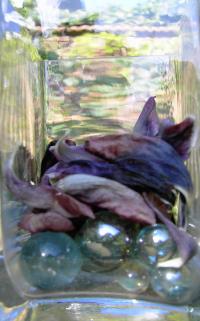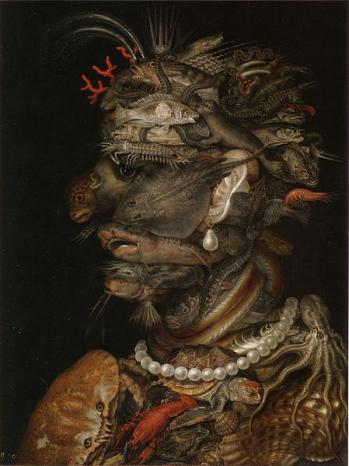in memory to Lisa allways
namaste
The artist is not a different kind of person, but every person is a different kind of artist.
Eric Gill
welcome
to open this
window
WILLKOMMEN
ZUM ÖFFNEN DIESES
FENSTERLADENS
to find
may be what you never searched for
what ever it might be
but what opends total new perspective to you
now that you found it
UND ZU FINDEN WAS SIE VIELEICHT SCHON IMMER GESUCHT HABEN
WAS IMMER ES VIELEICHT AUCH SEI!
ODER ZU FINDEN WAS SIE VIELEICHT GAR NICHT GESUCHT HABEN
ABER NUN VÖLLIG NEUE AUSBLICKE ERÖFFNET
SEIT SIE ES ENTDECKT HABEN
just let surprise you
while enjoying new inspiration
GÖNNEN SIE SICH EINE ANGENEHME ÜBERASCHUNG
UND GENIESSEN SIE ENTSPANNT NEUE IDEEN FÜR SICH UND ALLE DIE SIE MÖGEN
LASSEN SIE SICH INSPIRIEREN
UND FALLS SIE POSITIVES FÜR SICH ERSPÄHT
HABEN SO LASSEN SIE UNS DIES WISSEN
WIR FREUEN UNS DARAUF
and if you like it so let us know we like to share your
joy


„Es ist heilsam, sich mit farbigen Dingen zu umgeben. Was das Auge freut, erfrischt den Geist, und was den Geist erfrischt, erfrischt den Körper.“

Gehemmtes Algenwachstum
Nano-Müll könnte Leben im Wasser stören
Corbis
Klein, aber oho! Die Industrie schwört auf Nanopartikel als neuen Wunder-Werkstoff. Doch Umweltexperten warnen jetzt vor den Gefahren: Forscher haben gezeigt, dass die Kleinstteilchen das Wachstum von Algen hemmen - und die bilden die Basis für fast alles Leben im Wasser.
Ihre Struktur ist von einer seltsamen, schlichten Schönheit, auch wenn man diese nicht sehen kann. Unzählige Kohlenstoff-Atome in sechseckiger Anordnung bilden zusammen hauchdünne Röhrchen mit einzigartigen Eigenschaften. Willkommen in der Welt der Nanotechnologie. Die nur einen Tausendstel Mikrometer dünnen Röhrchen werden vor allem gerne zur Verstärkung von Kunststoffen eingesetzt: in Fahrradrahmen zum Beispiel oder in Tennisschlägern. Auch in der Elektrotechnik oder im Flugzeugbau erhoffen sich Ingenieure große Fortschritte durch die Verwendung von Kohlenstoff-Nanoröhrchen, abgekürzt CNT.
ANZEIGE
Bedenken? Nein, meinen die meisten Befürworter der Nanotechnologie. CNT bestehen doch aus reinem Kohlenstoff. Keine Gefahr.
So einfach ist es allerdings nicht. Über die möglichen ökologischen Risiken von Nanoteilchen sind sich Experten nach wie vor uneinig. Mehrere Laborstudien haben Hinweise auf toxische Wirkungen bei unterschiedlichen Organismen erbracht - doch welche Rolle die Kleinstpartikel in der Natur tatsächlich spielen könnten, lässt sich bisher kaum abschätzen. Die beeinflussenden Faktoren sind enorm komplex.
Jetzt hat ein Forscherteam der Eidgenössischen Materialprüfungs- und Forschungsanstalt (Empa) in St. Gallen erstmals untersucht, welchen Einfluss CNT auf aquatische Ökosysteme haben. In einer aktuellen Studie, über die sie im Fachmagazin "Environmental Science and Technology" berichten, kommen sie zu dem Ergebnis: CNT hemmen das Wachstum von Grünalgen.
In Reinform sind CNT extrem hydrophob, also kaum wasserlöslich, erklärt die Empa-Chemikerin Fabienne Schwab auf SPIEGEL ONLINE. "Im natürlichen Umfeld aber werden die Nanopartikel in einem riesigen Cocktail mit verschiedensten Substanzen zusammen sein."
Eine Frage der Wasserlöslichkeit
Das könnte weitreichende Folgen haben: Flüsse und Seen enthalten normalerweise große Mengen mehr oder weniger gut gelöste natürliche organische Substanzen wie Proteinreste und Zellulose, kurz als NOM bezeichnet. Ihre Moleküle lagern sich an die künstlichen Kleinstteilchen an und treten nach außen mit den Wassermolekülen in Wechselwirkung.
So übernimmt das natürliche Material praktisch die Funktion eines Detergens, wie Seife - ein Effekt, den Fabienne Schwab nur zu gut aus dem Labor kennt: "Die Zugabe von NOM ist eine sehr wirksame Methode, um die Kohlenstoff-Nanoröhrchen ohne chemische Modifizierung in Suspension zu bringen." In der Natur heißt das aber: Die Partikel werden bioverfügbarer. Sie können in das Ökosystem eingreifen.
Den potentiellen Einfluss von CNT auf die Nahrungskette untersuchte Schwab gemeinsam mit einem Expertenteam aus verschiedenen Schweizerischen Forschungsinstituten. Die Wissenschaftler kultivierten einzellige Algen der Arten Chlorella vulgaris und Pseudokirchneriella subcapitata in unterschiedlichen CNT-Suspensionen und beobachteten deren Wachstum.
Die Forscher verwendeten dafür reine sowie oxidierte Nanoröhrchen. Bei Letzteren haben sich bestimmte chemische Bausteine wie die sogenannten Hydroxil-Gruppen am Kohlenstoffgitter angehängt. Sie verändern das Reaktionsverhalten der CNT.
Die experimentellen Ergebnisse zeigen ein deutliches Bild: Ab einer gewissen Konzentration hemmen CNT das Algenwachstum. Dabei ist es von großer Bedeutung, wie gut die Nanoröhrchen im Wasser verteilt sind. Je besser, desto größer die wachstumshemmende Wirkung. Bei 5,5 Milligramm CNT pro Liter ist die Algenproduktion um circa 75 Prozent reduziert. Die oxidierten Partikel haben einen ungefähr doppelt so starken Einfluss wie die unmodifizierte Variante.
Störende Klumpen
Allerdings scheinen die Kohlenstoff-Nanoröhrchen nicht direkt giftig auf die Algen zu wirken. Die Forscher untersuchten die betroffenen Zellen unter ihren Mikroskopen und konnten dabei keine Schäden feststellen. Es schien den Kleinstorganismen relativ gutzugehen, berichtet Fabienne Schwab. Die Ursache für das verringerte Wachstum liegt offenbar woanders.
Zum einen beobachteten die Forscher, wie sich in der Anwesenheit von CNT im Wasser seltsame Klümpchen bildeten - aus Nanoröhrchen und Algenzellen. Wenn die Mikropflanzen aber nicht frei und einzeln schweben können, fangen sie weniger Licht auf, was wiederum deren Photosynthese-Produktivität beeinträchtigt. Abgesehen davon absorbieren gelöste Nanopartikel selbst auch erhebliche Mengen Lichtenergie, wie sich bei weiteren Messungen zeigte. Der dadurch entstehende Schatteneffekt hat ebenfalls einen negativen Einfluss auf das Algenwachstum.
Relevante Beeinträchtigungen traten bei den Versuchen bereits ab CNT-Konzentrationen von ein Milligramm pro Liter auf. Das ist zwar eine hunderttausendfach höhere Konzentration als Modellrechnungen für die bisherigen Maximal-Mengen in der Natur ergeben haben. Derzeit stellten die Nanopartikel also keine Gefahr für Grünalgen dar.
Trotzdem müsse man die CNT im Auge behalten, fordert Schwab. "Die weltweite Produktion von Kohlenstoff-Nanoröhrchen steigt rasant an." Zurzeit liege sie schon über 1000 Tonnen jährlich, und die Ware sei frei verkäuflich. "Die genaue Produktionsmenge und die gesetzliche Lage sind unklar, der Markt noch unreguliert", sagt Schwab.
Ein weiteres Problem: Es gibt noch keine Messtechnik, mit der sich Nanopartikel-Verschmutzung zuverlässig in der Umwelt nachweisen lässt, auch nicht in den getesteten und für wirksam befundenen Konzentrationen. Die Forschung tappt diesbezüglich also noch im Dunkeln.
Andere Nanoteilchen können den Ergebnissen einer aktuellen chinesischen Studie zufolge sogar dem Erbgut von Einzellern schaden. In diesem Fall wiesen Forscher nach, dass Kupferoxid-Nanopartikel von Blaualgen (Microcystis aerogininosa) durch Poren in die Zellwand aufgenommen werden. Anschließend kam es zur Beschädigung der DNA. Die Anwesenheit von organischen Stoffen im Wasser spielte auch diesmal eine entscheidende Rolle. Sie förderten offenbar die biologische Verfügbarkeit der Kupferoxid-Teilchen.
ANZEIGE
Einzellige Algen wie Chlorella vulgaris bilden die Nahrungsgrundlage für ganze Ökosysteme. Fachleute bezeichnen sie als Primärproduzenten, weil sie in der Lage sind, aus Sonnenlicht und anorganischer Materie Biomasse zu erschaffen. Sie bilden somit die Basis für das tierische Leben im Wasser, für die ganze Nahrungspyramide der Konsumenten, vom Wasserfloh im Zooplankton bis hin zum Hecht - und natürlich bis hin zum zweibeinigen Fischesser, dem Menschen, an der Spitze.
Steigende CNT-Konzentrationen könnten deshalb zumindest theoretisch eine Reihe ökologischer Auswirkungen haben. Ihre Lebensdauer ist zudem enorm, was zukünftig vermutlich zur Anreicherung führen wird. Kohlenstoff-Nanoröhrchen sind biologisch und chemisch nur sehr schwer abbaubar, erklärt Fabienne Schwab.
Die Teilchen entstehen schließlich auch bei Waldbränden und Vulkanausbrüchen, sagt die Forscherin "Sie können Jahrtausende überdauern." Das bedeutet: "CNT werden wohl noch schwieriger aus der Umwelt zu entfernen sein als konventionelle Chemikalien, ihre Effekte sind heute unklar, und sie dürfen deshalb idealerweise gar nicht erst dorthin gelangen."
Das Bild befand sich seit seiner Entstehung im Besitz der Habsburger und ist heute im Kunsthistorischen Museum in Wien.
Albert Einstein
"Imagination is more important than knowledge. For knowledge is limited"
Albert Einstein was actually talking about bees. He said that if the bees were endangered then we would only have 4 years to live if the bees ARE disappeared. The honey bees officially were put in an endangered category in 2008
Albert Einstein sagte auch wenn die Bienen aussterben wird die Lebenskette in 4 Jahren für die Erde zu Ende sein
2008 wurden die bienen als gefährdete ART eingestuft
und hier gibt es immer noch Leute die meinen wir bräuchten keine Bienen
so muss ich an dieser Stelle doch leider anfügen das gegen Dummheit kein Kraut gewachsen ist !!!!!!!!!!!!!!!!!!!!!!!!!!!!!!!!!!!!!!!!!!!!!!!!!!!!!!!!!!!!!!!!!!!!!!!!!!!!!!!!!!!!!!!!!!!!!!!!!!!!!!
EP fordert europaweite Maßnahmen gegen das Bienensterben
There has never been more demand for natural and organic products. Natural Food Merchandiser opens their 2011 overview with this line: “From $1.9 billion in 1980 to $36 billion in 2010, sales in the natural products retail channels have come a long way.” People are looking for your product.
Honey bees are dying all over the globe. Here's why!
Since 2007, the media has been reporting about the dramatic loss of bees in Europe and North America. As many as 50% to 90% of the bee populations have simply vanished, leaving their hives empty and forcing farmers to demand investigations to determine the cause.
At first it was only the honeybees that were decimated -- then the bumblebee populations began to disappear. Bumblebees are responsible for pollinating an estimated 15 percent of all the crops grown in the U.S., worth $3 billion, particularly those raised in greenhouses. Those include tomatoes, peppers and strawberries. The crisis was eventually given a name: Colony Collapse Disorder or CCD.
CCD is a "fake disease!"
The most popular theory, aside from the varroa mite [right] and cellphone RF radiation, has been the belief that a virus -- similar to AIDS -- has infected the bees. A team led by scientists from the Columbia University Mailman School of Public Health, Pennsylvania State University, the USDA Agricultural Research Service, University of Arizona, and 454 Life Sciences found a significant connection between the Israeli Acute Paralysis Virus (IAPV) and colony collapse disorder (CCD) in honey bees.
A team of scientists from Edgewood Chemical Biological Center and University of California San Francisco identified both a virus and a parasite that are likely behind the recent sudden die-off of honey-bee colonies. Using a new technology called the Integrated Virus Detection System (IVDS), which was designed for military use to rapidly screen samples for pathogens, ECBC scientists last week isolated the presence of viral and parasitic pathogens that may be contributing to the honeybee loss.
But it now appears that a much more basic culprit has killed the bees -- Bayer Corporation. Colony Collapse Disorder is poisoning with a known insect neurotoxin called Clothianidin, a pesticide manufactured by Bayer, which has been clearly linked to massive bee die offs in Germany and France.
UPDATE: April 8, 2012
The current issue of Science Daily publishes solid proof that Bayer's Imidacloprid is the latest culprit. This, after initial findings that their product, Clothianidin, cause widespread bee deaths and was banned in several European countries. Farmers were apparently encouraged to switch to a similar pesticide, Imidacloprid, which as now been found to be even more deadly. Read about HERE
"Lu and his co-authors hypothesized that the uptick in CCD resulted from the presence of imidacloprid, a neonicotinoid introduced in the early 1990s. Bees can be exposed in two ways: through nectar from plants or through high-fructose corn syrup beekeepers use to feed their bees. (Since most U.S.-grown corn has been treated with imidacloprid, it's also found in corn syrup.)In the summer of 2010, the researchers conducted an in situ study in Worcester County, Mass. aimed at replicating how imidacloprid may have caused the CCD outbreak. Over a 23-week period, they monitored bees in four different bee yards; each yard had four hives treated with different levels of imidacloprid and one control hive. After 12 weeks of imidacloprid dosing, all the bees were alive. But after 23 weeks, 15 out of 16 of the imidacloprid-treated hives -- 94% -- had died. Those exposed to the highest levels of the pesticide died first.
The characteristics of the dead hives were consistent with CCD, said Lu; the hives were empty except for food stores, some pollen, and young bees, with few dead bees nearby. When other conditions cause hive collapse -- such as disease or pests -- many dead bees are typically found inside and outside the affected hives.
Strikingly, said Lu, it took only low levels of imidacloprid to cause hive collapse -- less than what is typically used in crops or in areas where bees forage."
On January 21, 1986 a patent was filed, and granted on May 3, 1988, for imidacloprid in the United States (U.S. Pat. No. 4,742,060) by Nihon Tokushu Noyaku Seizo K.K. of Tokyo, Japan.[6] On March 25, 1992, Miles, Inc. (later Bayer CropScience) applied for registration of imidacloprid for turfgrass and ornamentals in the United States. On March 10, 1994, the U.S. Environmental Protection Agency approved the registration of imidacloprid. It is one of Bayer's top agricultural products.
Here's the situation...
One of the most important crops is corn. It's used as a feed for chickens and pigs and cattle. It's used in flour and in the production of high fructose corn syrup. Just about everything we eat depends on corn. Recently, with the energy crisis, corn has also been pressed to make ethanol to run our cars. But corn has an enemy called the root worm.
(E)-1-(2-chloro-1,3-thiazol-5-ylmethyl)-3-methyl-2-nitroguanidine
Trade named: Poncho 600, Prosper and Elado, a Nitroguanidine subgroup of nicotinoids produced by Bayer Corporation and registered in 2003.
This pesky bug, called diabrotica vergifera vergifera, [right] burrows in the newly forming roots of the corn plant and causes the plant to wither and eventually die. Farmers have long sought some type of pesticide to kill the bug and, in 2003, Bayer Pharmaceutical introduced a new products called Clothianidin and Imidacloprid. Their own studies showed that these pesticide were highly toxic to bees but justified the widespread use because it could be applied to corn seed and would be buried in the soil where it would presumably be harmless to other creatures.
In theory, farmers were instructed to buy special machines that would coat their seeds multiple times with clothianidin and a special adhesive, dry the seeds, and then plant them. The poison is supposed to stick to the seed coat and to be toxic to the rootworm as it attempts to burrow in to the newly forming roots.
Bayer, who make the pesticide, and Monsanto, who make the adhesive, have patented the method of coating their proprietary seeds with clothianidin and imidacloprid, which are now growing all over the globe.
Oooooops!
The first clue that Colony Collapse Disorder was a simple case of poisoning -- similar to the DDT bird kill-off decades ago -- was when clothianidin was used on corn crops in Germany's Baden-Wuerttemberg state.
In July of 2007, the German crop was infested with the rootworm. The German government ordered that every possible method should be used to eradicate this pest, including the use of clothianidin (and now Imidacloprid). Shortly after the seeds were planted, in May of 2008, some 330-million bees abruptly died! The global phenomenon of has continued to this day.
According to the German Research Center for Cultivated Plants, 29 out of 30 dead bees had been killed, in the 2008 study, by direct contact with clothianidin.
Philipp Mimkes, spokesman for the German-based Coalition Against Bayer Dangers, said: "We have been pointing out the risks of neonicotinoids for almost 10 years now. This proves without a doubt that the chemicals can come into contact with bees and kill them. These pesticides shouldn't be on the market."
An investigation revealed that the seed coating did not stay in the soil but was introduced to the air (and the rest of the plant) by simple abrasion -- the rubbing together of seeds -- as they are stored, moved and injected in to the soil by farming machines.
German authorities suggested that the seeds were not treated with a special polymer, called a "Sticker," which makes the pesticide adhere to the seed. But it is noted also that the formulation of clothianidin does not require this "sticker" in typical applications and most farmers find this additional coating too cost prohibitive.
The German government quickly banned this pesticide and gave compensation to the farmers and issued a strong warning against using this chemical in agriculture. According to the German Federal Agriculture Institute,
"It can unequivocally be concluded that poisoning of the bees is due to the rub-off of the pesticide ingredient clothianidin from corn seeds."
According to the U.S. Environmental Protection Agency (May 30, 2003):
"Clothianidin has the potential for toxic chronic exposure to honey bees, as well as other nontarget pollinators, through the translocation of clonianidin redidue in nectar and pollen."[In the same report] "The fate and disposition of clothianidin in the environment suggest a compound that is asystemic insecticide that is persistent and mobile, stable to hydrolysis, and has potential to leach to ground water, as well as runoff to surface waters."
"Clothianidin is highly toxic to honey bees on an acute contact basis (killing 50% of tested populations at greater than 389 mg/kg). It has the potential for toxic chronic exposure to honey bees, as well as other nontarget pollinators, through the translocation of clothianidin residues in nectar and pollen. In honey bees, the effects of this toxic chronic exposure may include lethal and/or sub-lethal effects in the larvae and reproductive effects in the queen."
Clothianidin & Imidacloprid = neurotoxins
The cigarette industry used to brag that one or two cigarettes doesn't give a person lung cancer. Likewise, the pharmaceutical companies are quick to show that feeding bees a specific amount of neurotoxins, like clothianidin and Imidacloprid, doesn't kill the bees. And, of course, this is true.
While small traces of clothianidin or imidacloprid may not kill bees outright, it can and apparently does interfere with their ability to navigate to and from the hive. The pollen that they manage to bring back to the hive is then further concentrated and exposed to the entire colony, causing suppression of their immune systems and subsequent infection by any number of parasites and pathogens. This is exactly what beekeepers and farmers have been reporting -- half empty, infested bees or abandoned hives with no dead bodies to be found anywhere. It has also been noted that the empty colonies are absent the usual parasitic bugs that typically take advantage of an abandoned hive. The colonies appear sterile.
People dressed as bees demonstrate against pesticides 21 April 2007 in front of the Bayer headquarters in Brussels. Three millions bees have been dying each year since the introduction on the market of the pesticide manufactured by Bayer. Poster reads :'Gaucho Bayer, only kills if one uses it.'
Not Just Corn
The tragedy in Germany and France showed that bees who became exposed to clothianidin also infected bee colonies that were not harvesting corn pollen, thus spreading the toxin to regions at some distace to areas cultivating corn plants. It is theorized that they could have become disoriented and mingled with bees from other colonies or contaminated the pollen of plants where other bee colonies were also pollenating.
Then there is this new evidence that a similar chemical, imidacloprid, also marketed by Bayer, can produce colony collapse at levels far below those used in agriculture! What's going on here?
Same old story... Will they ever replace the bees?
Money talks. Agro-business is huge and their influence is deep in the sciences and politics. Their own scientists must know very well that their product has threatened the global population of bees, yet they allow the conspiracy theories of a mysterious "Colony Collapse Disease" to endure. Clothianidin and imidacloprid (another pesrticide also banned by Germany and France) account for much of Bayer's agrochemical profits.
I used to think of Bayer as the company that made aspirin and medicine, but I recently saw a list of poisons that they made and marketed to kill everything from microbes to insects. It seems odd to me that a company that makes poisons also makes medical cures... Is there a link there? Perhaps it's just different sides of the same dollar or Euro. And then there is the Nazi connection to Bayer's "mother" corporation, IG Farbin. That will open a few eyes if you bother to do the research.
We need justice. Bayer developed, manufactured, experimented and lobbied to get these pesticides on the market and they hindered their recall when proof was known about how damaging they were. Years passed as the bees around the globe have died in large numbers. Bayer killed the them. Will Bayer replace all the bees?
UPDATE
(08-18) 18:37 PDT -- The U.S. Environmental Protection Agency is refusing to disclose records about a new class of pesticides that could be playing a role in the disappearance of millions of honeybees in the United States, a lawsuit filed Monday charges.
The Natural Resources Defense Council wants to see the studies that the EPA required when it approved a pesticide made by Bayer CropScience five years ago.
The environmental group filed the suit as part of an effort to find out how diligently the EPA is protecting honeybees from dangerous pesticides, said Aaron Colangelo, a lawyer for the group in Washington.
The EPA granted conditional registration for clothianidin in 2003 and at the same time required that Bayer CropScience submit studies on chronic exposure to honeybees, including a complete worker bee lifecycle study as well as an evaluation of exposure and effects to the queen, the group said. The queen, necessary for a colony, lives a few years; the workers live only six weeks, but there is no honey without them.
"The public has no idea whether those studies have been submitted to the EPA or not and, if so, what they show. Maybe they never came in. Maybe they came in, and they show a real problem for bees. Maybe they're poorly conducted studies that don't satisfy EPA's requirement," Colangelo said.
Freedom of speech isn't something somebody else gives you. That's something you give to yourself.
Von 1951 bis 2005 sind mit Billigung der zuständigen Behörden auf deutschen Äckern mindestens 13.000 Tonnen Uran ausgebracht worden. Das stellt Prof. Dr. Ewald Schnug vom Julius-Kühn-Institut des Ministeriums für Ernährung, Landwirtschaft und Verbraucher in einer konservativen Abschätzung fest. Phosphatdünger sind, so Schnug in seinen Vorträgen, mit durchschnittlich einem halben Pfund Uran pro Tonne verunreinigt. In der Düngemittelverordnung ist weder eine Deklaration noch ein Grenzwert für Uran festgelegt. Für das zuständige Bundesministerium für Ernährung, Landwirtschaft und Verbraucherschutz existiert das Problem der Kontamination der Äcker mit Uran offenbar nicht. Ohne dass die Bauern es wissen, werden sie zu Mittätern und verseuchen bei der Düngung mit mineralischen Phosphaten Böden und Gewässer mit dem hochgiftigen Schwermetall. Der Zusammenhang zwischen der Düngung und der Uranverseuchung der Gewässer ist der Bundesregierung seit mindestens 1984 bekannt. Die Chemikerin Professor Andrea Koschinsky von der Jacobs-University Bremen rechnet damit, dass es bis zu 50 Jahre dauern kann, bis das Uran in vollem Umfang in den Trinkwasserleitern ankommt. Damit schlummert in unseren Ackerböden eine Zeitbombe. Bis zu zwei Drittel aller Brunnen in Norddeutschland sind laut Professor Ewald Schnug bereits mit Uran aus der Düngung kontaminiert. In einigen Fällen bis weit über den ab Juni 2011 geltenden Grenzwert für Trinkwasser hinaus. Die Dokumentation "Gefährliches Trinkwasser" ist eine spannende Spurensuche nach den Quellen des Urans im Trinkwasser. Sie verfolgt die Fährte von dem kleinen Dorf Palmzin in Mecklenburg-Vorpommern bis in die Phosphatminen Marokkos.
20Uhr15 auf 3sat
Passivsaufen schadet der Gesundheit
London (dpo) - Kommt jetzt das Saufverbot in der Gastronomie? Eine medizinische Studie im Auftrag der Weltgesundheitsorganisation (WHO) ist zu dem Ergebnis gekommen, dass der passive Genuss von Alkohol - ähnlich wie das Passivrauchen - ernsthafte gesundheitliche Schäden hervorrufen kann. Die Palette reicht von leichten Schürfwunden bis hin zum gebrochenen Nasenbein.
Im Rahmen der Studie mussten 200 Nichttrinker einen gewöhnlichen Kneipen- oder Discoabend mit Menschen verbringen, die größere Mengen an Alkohol konsumierten. Das erschreckende Ergebnis: Die Wahrscheinlichkeit, dass die Nichttrinker gesundheitliche Schäden davontragen, ist um das achtfache größer als bei Probanden einer Vergleichsgruppe, die ihren Abend ausschließlich mit Abstinenzlern verbrachten.
| Schaden nicht nur sich, sondern auch anderen: Trinker |
Im Detail wurden von den Passivtrinkern 21 von Betrunkenen verprügelt - in den meisten Fällen beim Versuch, einen Streit mit nüchternen Argumenten zu schlichten -, vier trugen Verletzungen davon, weil sie auf der Toilette auf Erbrochenem ausgerutscht waren, und sieben wurden durch unter Alkoholeinfluss geworfene Dartpfeile verletzt. Eine weitere Versuchsperson brach sich das Steißbein, nachdem ihr ein alkoholisierter Spaßvogel den Stuhl unter dem Hintern weggezogen hatte.
Professor Mark Hammond von der University of London, an der die Studie durchgeführt wurde, erklärte: "Zwar ist aktiver Alkoholgenuss noch gesundheitsschädigender als der passive Konsum, aber im Gegensatz zu aktiven Trinkern haben Nichttrinker keine Wahl."
Daher empfiehlt die Weltgesundheitsorganisation aus Gründen des Nichttrinkerschutzes ein allgemeines Saufverbot für die Gastronomie. Alternativ könnten Gastwirte auch ein separates Trinkerzimmer einrichten oder den Alkoholkonsum im Freien erlauben, wo es einfacher ist, Betrunkenen aus dem Weg zu gehen.
http://www.der-postillon.com/2011/12/schockstudie-passivtrinken-schadet-der.html
DA SOLLTEN SO MANCHE ZEITGENOSSEN VIELEICHT DOCH MAL DRÜBER NACHDENKEN
BLESSINGS ALLWAYS MOMO "2012" IM JAHRE GOTTES
























 Dies ist eine mit page4 erstellte kostenlose Webseite. Gestalte deine Eigene auf www.page4.com
Dies ist eine mit page4 erstellte kostenlose Webseite. Gestalte deine Eigene auf www.page4.com